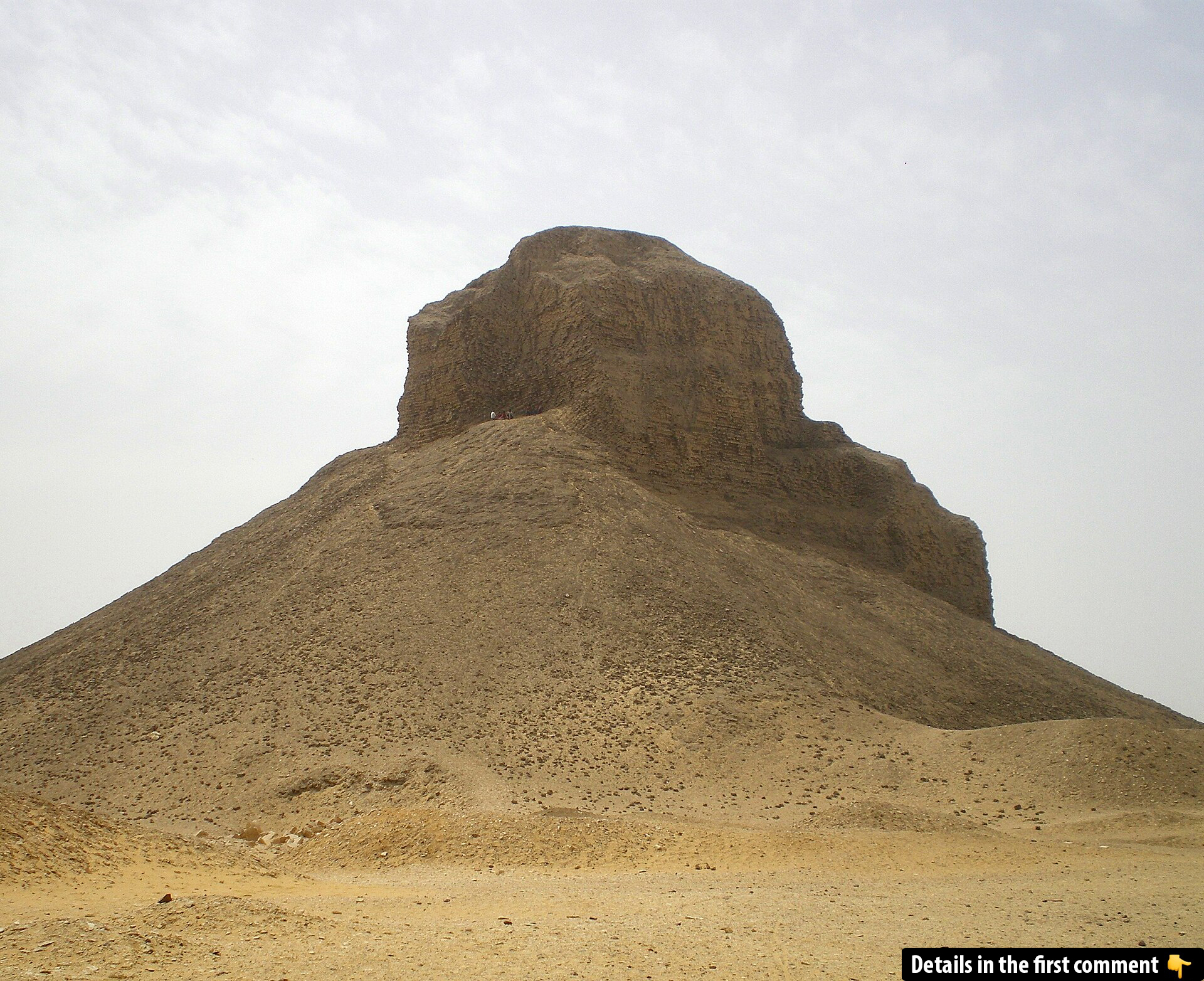Amid the sprawling desert of Dahshur in Egypt, one pyramid stands as a quiet reminder of a lost time—a time when the Middle Kingdom of Egypt reached its zenith in architectural and cultural achievements. The Black Pyramid, built for Pharaoh Amenemhat III, has weathered the ravages of time, natural disasters, and human interference. Often overshadowed by the grandeur of its older counterparts like the Great Pyramid of Giza, the Black Pyramid is no less significant. Although it is in a state of decay, it provides critical insights into the architectural evolution of Egypt’s pyramid-building tradition. This article delves deep into the pyramid’s architecture, symbolism, the struggles it faced, and the mysterious history it holds.
The Architecture of the Black Pyramid
At its peak, the Black Pyramid was a towering monument, with a height of around 75 meters and a base stretching 105 meters across. Built primarily with mud bricks and a veneer of limestone, this pyramid was a unique departure from the stone constructions of earlier pyramids. The decision to use mud brick, while less durable than stone, was likely influenced by the pyramid’s location. Situated close to the Nile River, the pyramid sat in a low-lying area, only about 10 meters above sea level. This positioning was not ideal for a structure of such magnitude, as it allowed water to seep into the pyramid’s foundation, eventually contributing to its collapse.
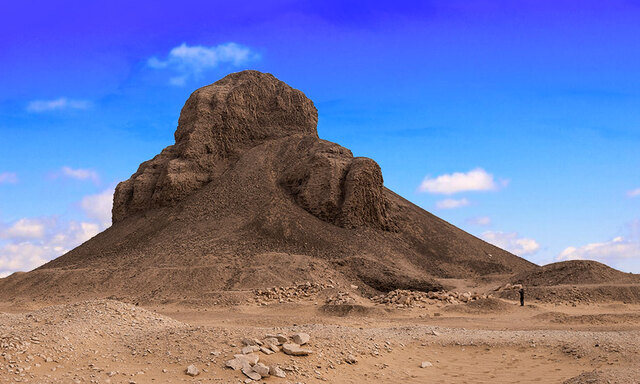
The pyramid’s steep slopes were originally set at 59 degrees at the lower levels and 55 degrees at the upper levels. The structure’s base dimensions and the degree of slope offered a striking visual aesthetic, which, even today, captures the imagination of visitors and archaeologists alike. But it’s the pyramid’s symbolism, embedded in its design, that adds a layer of mystique to its physical form. The east-west alignment, typical of many pyramids, reflected the journey of the sun, symbolizing the pharaoh’s passage to the afterlife.
Video
Watch this video to discover the story behind Egypt’s failed pyramid, exploring what happened to the Black Pyramid of Amenemhat III and its mysterious history.
The Pyramid’s Design and Symbolism
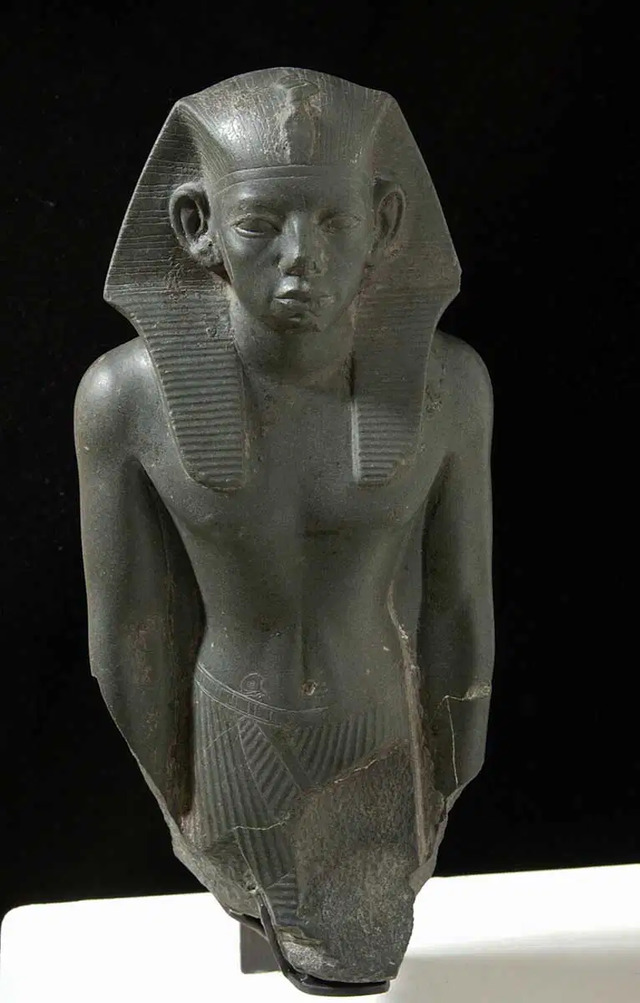
The Black Pyramid was not just a tomb; it was a representation of the pharaoh’s connection to the divine. The pyramid’s design was a deliberate effort to symbolize the journey of the king’s soul. Its capstone, or pyramidion, was adorned with hieroglyphic inscriptions, depicting religious symbols that granted Amenemhat III access to the sun-god, Ra. Some of these inscriptions were later scratched off, perhaps during the reign of Akhenaten, the heretic pharaoh who famously defaced many ancient Egyptian monuments.
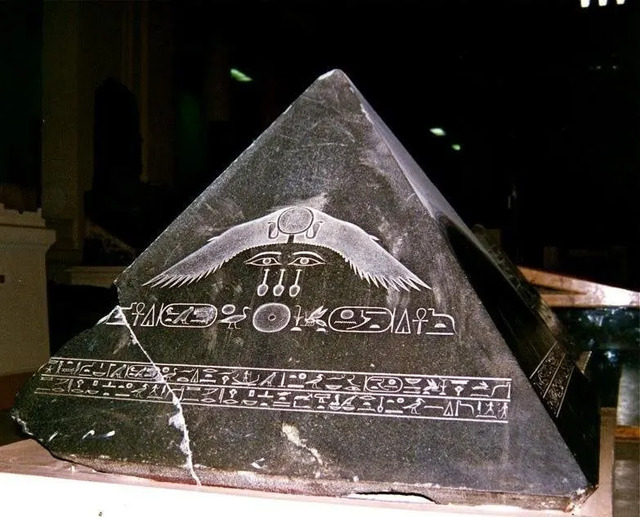
The pyramidion, a crucial part of the pyramid, is particularly interesting due to its significance in Egyptian religious practices. Not only was it believed to offer the pharaoh a connection to the gods, but the capstone may have once been a key site for rituals performed to honor the king’s journey to the afterlife.
The Subterranean Complex: A Glimpse into Ancient Burial Practices
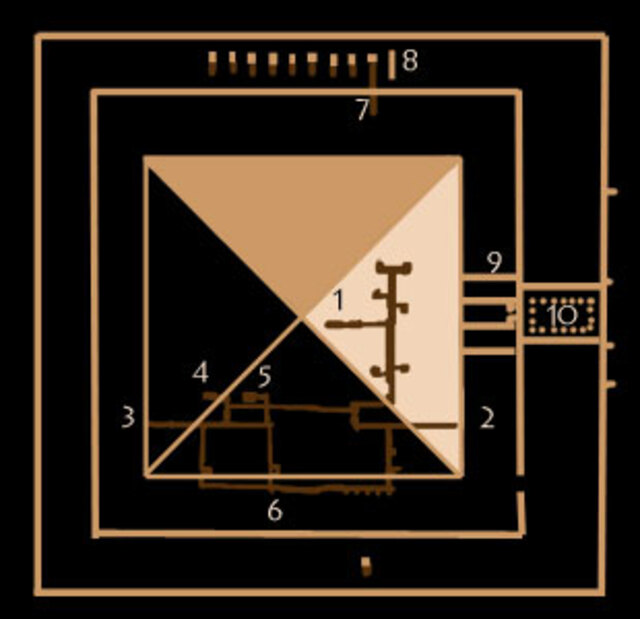
Beneath the surface of the Black Pyramid lies an intricate network of passages and burial chambers. This subterranean complex was divided into sections, with one area dedicated to Amenemhat III himself and others reserved for his queens. The “King’s Section” remained mostly intact with a sarcophagus and canopic jars, but it’s important to note that Amenemhat III was not buried in the pyramid. The burial chamber of the king was likely abandoned as the pyramid began to sink, and it’s believed that his final resting place was eventually moved to another, more secure pyramid in Hawara.

The “Queen’s Section” of the pyramid contained two significant burial chambers. One belonged to Queen Aat, and the other to an unnamed queen. Archaeologists found many artifacts in these chambers, including jewelry, alabaster cases, and a canopic jar, which offered valuable insights into the royal burial customs of the time. Unfortunately, both chambers had been looted long ago, yet the few untouched relics provided important information on the ceremonial practices associated with these royal tombs.

The Sinking Dilemma: A Pyramid’s Struggle Against Time
One of the most fascinating aspects of the Black Pyramid is the story of its construction and subsequent failure. Built on unstable ground and at such a low elevation, the pyramid began to sink shortly after its completion. This sinking phenomenon was not unique to this pyramid. The Bent Pyramid of Sneferu in Dahshur faced similar issues, leading to its eventual abandonment. Despite attempts to reinforce the pyramid with cedar beams and mudbrick walls, the weight of the structure eventually became too much for its foundation to bear. As a result, the pyramid’s lower levels began to collapse, and the superstructure deteriorated, giving rise to the name “Black Pyramid,” due to the dark appearance of its crumbling mudbrick core.
The structural failure of the Black Pyramid marked a shift in how the ancient Egyptians approached pyramid construction. While earlier pyramids, such as the ones built by the Old Kingdom pharaohs, were constructed using stone and on more stable ground, Amenemhat III’s pyramid served as a cautionary tale for future pyramid builders. This architectural failure led to the eventual construction of a more secure pyramid for the pharaoh at Hawara, signaling a departure from the ambitious, yet ultimately flawed, design of the Black Pyramid.
Looting and Archaeological Discovery
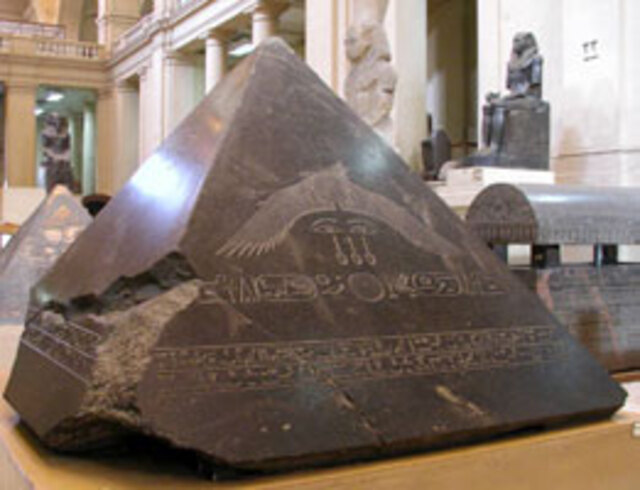
The Black Pyramid has long been a target for looters. In antiquity, its subterranean chambers were raided, and many of its treasures were stolen. This continued over the centuries, especially after the collapse of the pyramid’s superstructure. The excavation of the Black Pyramid began in 1892 under the direction of Jacques de Morgan, a French archaeologist, and continued under the German Archaeological Institute until 1983. These excavations revealed the extent of the pyramid’s decay and the treasures that had been looted.
Modern-day looting, however, has intensified, especially after the Egyptian Revolution of 2011. The political turmoil that followed led to an increase in tomb raiding activities, with looters using high-tech equipment to locate and excavate ancient burial sites. Despite these challenges, the efforts to study and preserve the Black Pyramid have continued, providing valuable insights into Egypt’s ancient burial practices and architectural achievements.
The Black Pyramid’s Legacy and Restoration Efforts

The Black Pyramid of Amenemhat III may no longer stand in its original splendor, but its significance remains immense. As one of the earliest attempts at pyramid construction using mud brick, it paved the way for future pyramids in Egypt. Its structural failure also provided crucial lessons that would influence later pyramid designs, including the final tomb of Amenemhat III at Hawara.
Despite its physical deterioration, the pyramid’s legacy continues to shape our understanding of ancient Egyptian architecture and funerary practices. Efforts to stabilize and restore the pyramid are ongoing, and the site remains an important point of interest for archaeologists and visitors alike.
Burial Complex of Amenemhat III: The King’s Final Resting Place
Though Amenemhat III was not buried in the Black Pyramid, the tomb complex remains an essential part of his legacy. The discovery of burial chambers for his queens and the presence of numerous funerary artifacts provide a glimpse into the lavish rituals associated with royal burials. The pyramid complex’s intricate design also speaks to the religious and cultural importance of the pharaoh’s journey to the afterlife. The use of multiple burial chambers, the inclusion of queens in the tomb complex, and the lavish offerings found within are testament to the grandeur that characterized Amenemhat III’s reign.
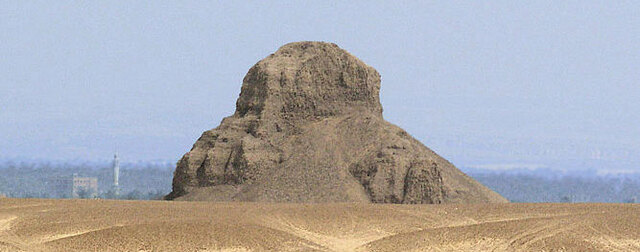
Video
Check out this video to explore the Ben-Ben stone of Amenemhat III, uncovering its historical and symbolic significance in ancient Egypt.
Conclusion: The Black Pyramid’s Role in Ancient Egyptian History
The Black Pyramid of Amenemhat III serves as a poignant reminder of Egypt’s architectural and cultural prowess, even in the face of structural failure. While the pyramid itself may not have endured the test of time, the lessons it imparted in terms of construction, symbolism, and royal burial practices continue to influence our understanding of ancient Egypt.
It is through the study of these forgotten monuments that we gain a deeper appreciation for the ingenuity and determination of the ancient Egyptians, who, even in failure, left behind a legacy that endures to this day. The Black Pyramid, with all its flaws and mysteries, remains an integral part of Egypt’s historical landscape, forever etched into the annals of archaeology.
